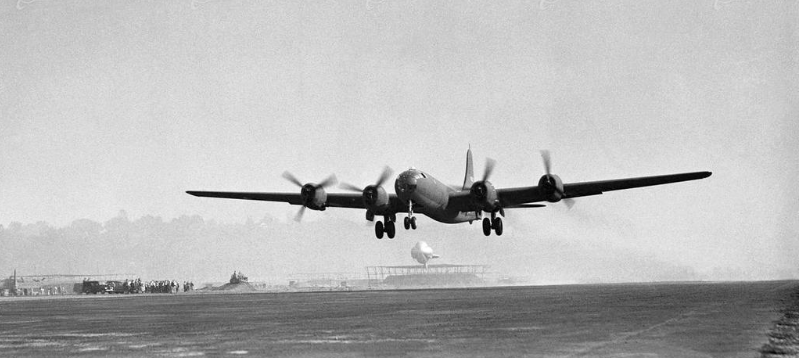
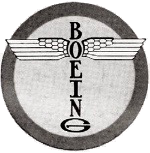
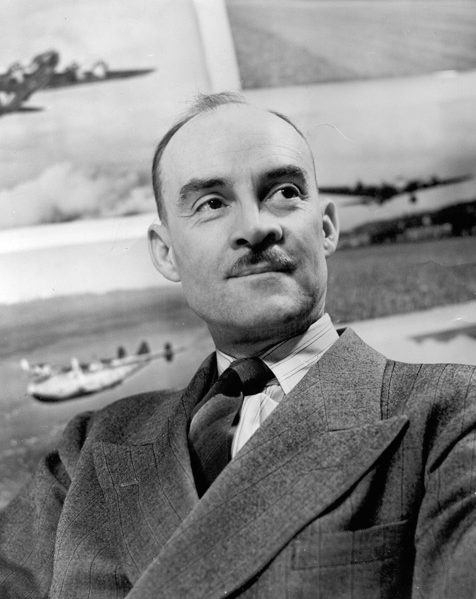
41-0003 had first flown on 30 December 1942, piloted by Allen. During that flight, the prototype bomber suffered a major engine fire and Eddie Allen’s performance in returning the airplane to the airport later earned him the U.S. Army’s Air Medal, awarded on the specific orders of President Harry S. Truman.
Problems with the XB-29s’ Wright R-3350-13 engines had caused major delays in the B-29 testing program. The Number 2 aircraft had its engines replaced with those from the first XB-29, 41-0002. By 18 February, 41-0003 had made only eight flights, with a total flight time of 7 hours, 27 minutes.
The ninth test flight of 41-0003 was planned to test the climb performance to 25,000 feet (7,620 meters) and to collect engine cooling data.
At 12:17 p.m., 41-0003 was climbing through 5,000 feet (1,524 meters) when the #1 engine (the outboard engine on the left wing) caught fire. The engine was shut down and CO2 fire extinguishers were activated. Eddie Allen began a descent and turned back toward Boeing Field.
The wind was out of the south at 5 miles per hour (2.24 meters per second) so it was decided to land on Runway 13, the southeast/northwest runway. At 12:24, radio operator Harry Ralston reported that the XB-29 was 4 miles (6.4 kilometers) northeast of the field at 1,200 feet (366 meters).
The airplane was in the landing pattern turning from the downwind leg to the base leg when at 12:25 an explosion occurred. Ralston was heard to say, “Allen, better get this thing down in a hurry. The wing spar is burning badly.”
In order to save weight, various parts of the Wright R-3350 engine were made of magnesium, a flammable metal which burned at a very high temperature. With an engine on fire, the bomber’s wing structure was extremely vulnerable.
The prototype bomber was now shedding parts and left a trail behind it on the ground. The fire was now burning inside the fuselage. Three crew members bailed out but the altitude was too low and they were killed.
At 12:26 p.m., Boeing XB-29 41-0003 crashed into the Frye Meat Packing Plant, south of downtown Seattle, and exploded. Nearly 5,000 gallons (18,927 liters) of gasoline started a massive fire. The 8 men still aboard the prototype bomber were killed, as were 20 employees inside the building. A firefighter who responded was also killed.
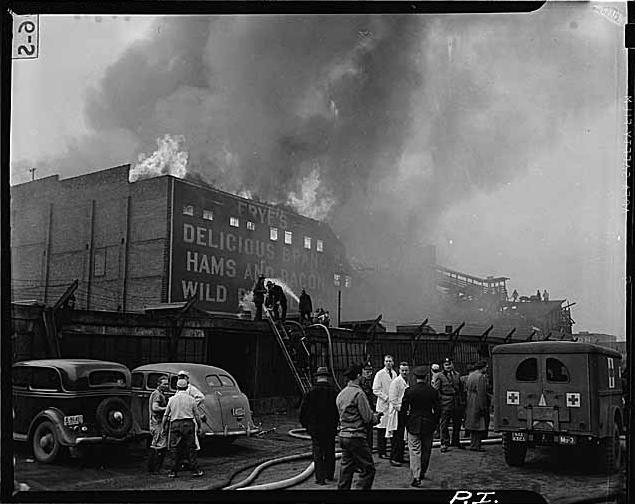
Three XB-29 prototypes were built. The XB-29 was 98 feet, 2 inches (29.896 meters) long with a wing span of 141 feet, 3 inches (43.053 meters), and 27 feet, 9 inches (8.458 meters) high to the top of its vertical fin. The prototype bomber had a gross weight of 105,000 pounds (47,627.2 kilograms).
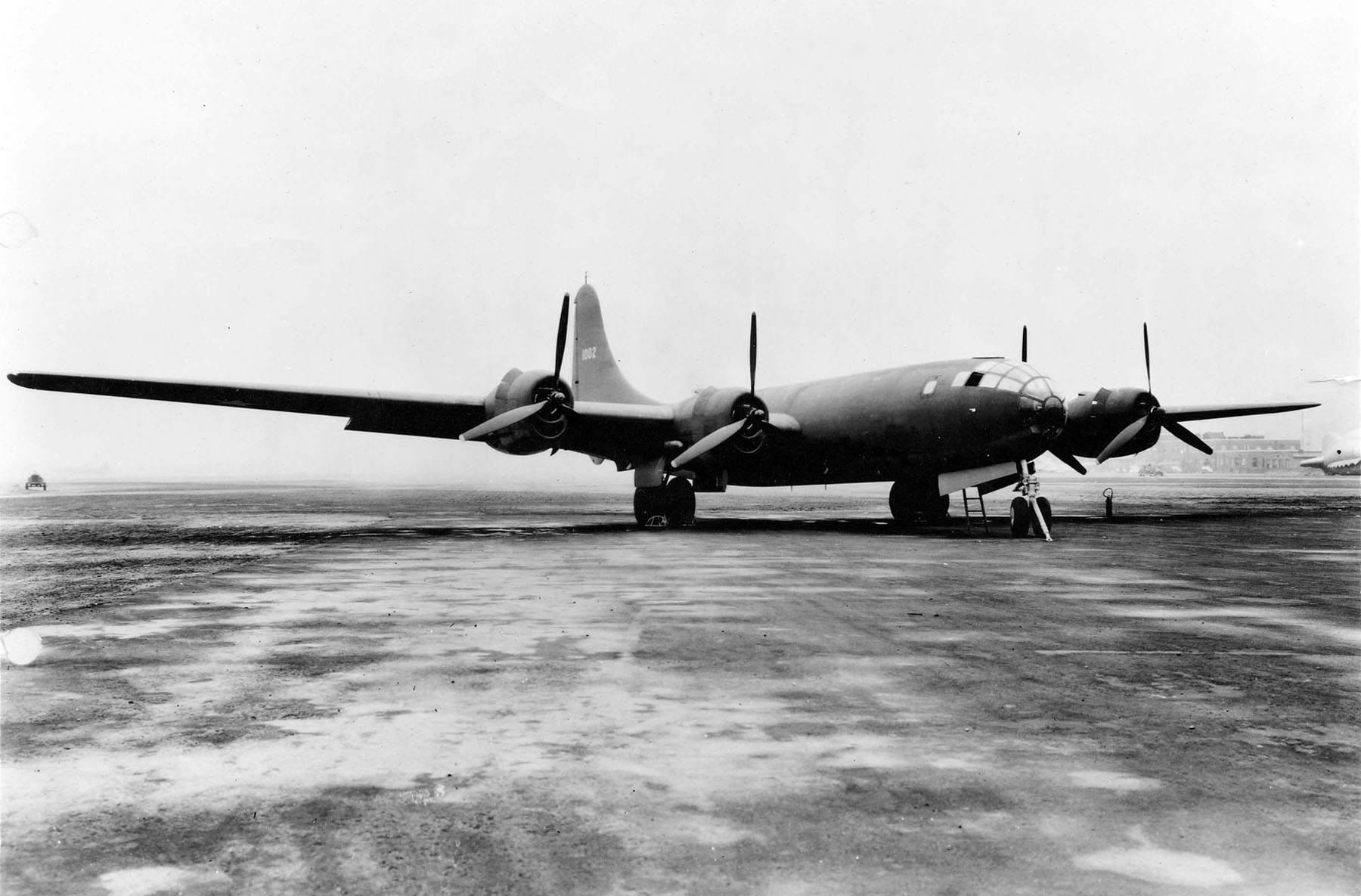
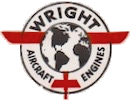
The XB-29 had a maximum speed of 368 miles per hour (592 kilometers per hour) and cruised at 255 miles per hour (410 kilometers per hour). Its service ceiling was 32,100 feet (9,784 meters). The airplane was designed to carry 20,000 pounds (9,072 kilograms) of bombs.
The B-29 Superfortress was the most technologically advanced—and complex—aircraft of the War. It required the manufacturing capabilities of the entire nation to produce. Over 1,400,000 engineering man-hours had been required to design the prototypes. It would be manufactured by Boeing at Seattle and Renton, Washington and at Wichita, Kansas; by Glenn L. Martin Company at Omaha, Nebraska; and by Bell Aircraft Corporation, Atlanta, Georgia.
There were three XB-29 prototypes; 14 YB-29 pre-production test aircraft; 2,513 B-29; 1,119 B-29A; and 311 B-29B Superfortress aircraft. The bomber served during World War II and the Korean War and continued in active U.S. service until 1960.
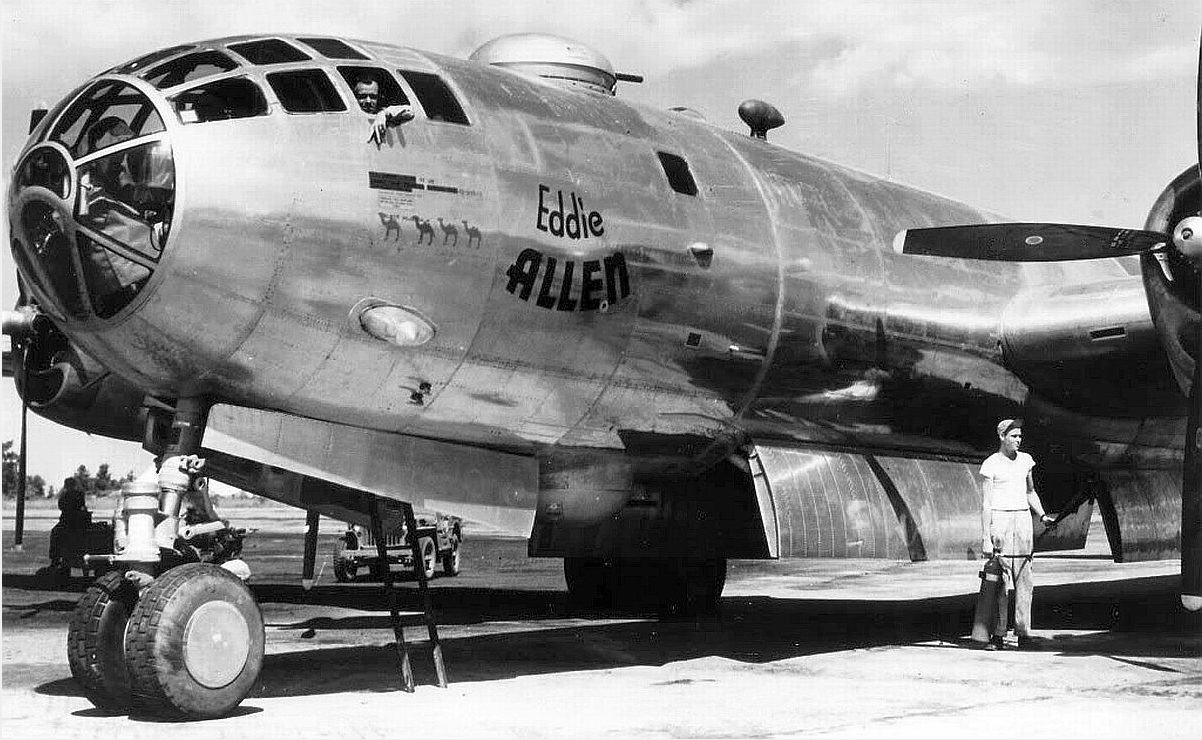
The employees of the Boeing plant at Wichita, Kansas donated the money to build a B-29 to be named in honor of Eddie Allen. B-29-40-BW 42-24579 flew 24 combat missions. On its final mission over Tokyo, Japan, the Eddie Allen was so badly damaged that, though it was able to reach its base on the island of Tinian, it never flew again.
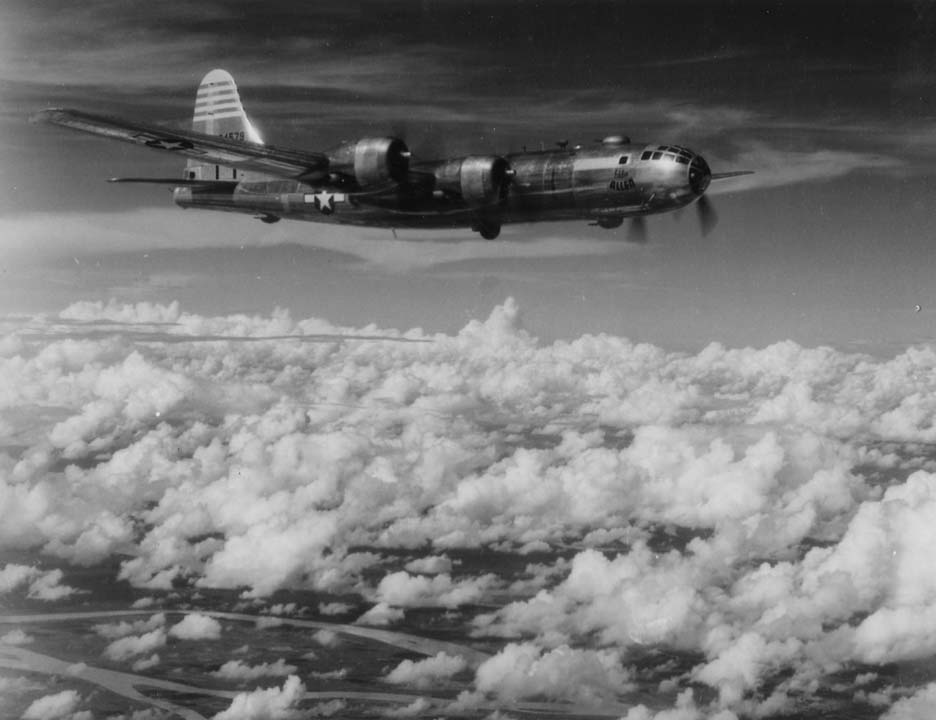
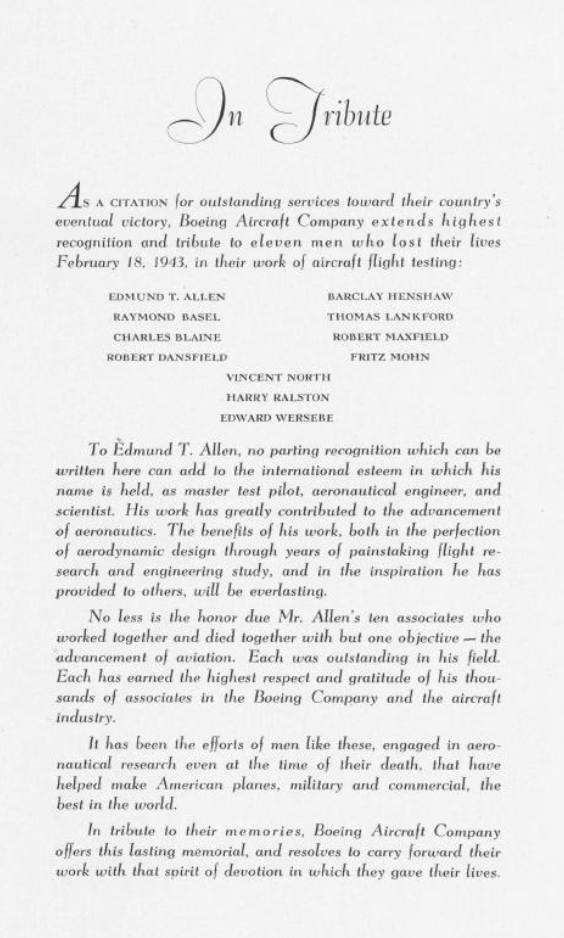
© 2019, Bryan R. Swopes
My Father-in-Law was working in a building close by to the meat packing plant. He worked for the Army Corp of Engineers. He saw the whole thing. Dreadful accident
My father,Ellsworth M Hammond was an armorer (gunnery mech?) on Tinian during the war.
https://www.cycleworld.com/story/blogs/ask-kevin/error-propagation-explained/
The r-3350’s crankcases were made of forged steel not magnesium. What caused those engine fires were a backfire that caught the fuel air mixture in the magnesium supercharger diffuser on fire. The above link gives more details on the how this could happen. Carl
Thank you, Carl. I have read your article on turbocompound R-3350s at Engine History.org. You state, “The main crankcase sections, which house the crankshaft and the cylinders, are machined from steel forgings. The remaining engine sections are machined from magnesium alloy castings.” Perhaps I was too general in my statement. But. . .
Quoting from The Aviation History Online Museum article, “Wright R-3350”: “To save weight, the engine crankcase was made of a magnesium alloy, however, magnesium is flammable metal and can produce a fire hot enough to burn through the aircraft structure.” —http://www.aviation-history.com/engines/r3350.htm
Wikipedia: “Because of a high magnesium content in the potentially combustible crankcase alloy, the resulting engine fires — sometimes burning with a core temperature approaching 5,600 °F (3,100 °C)[1] — were often so intense the main spar could burn through in seconds, resulting in catastrophic wing failure.[2]”
Smithsonian Magazine, “How B-29 Crews Trained to Drop the Bomb”: “But the B-29 was imperfect. In the labored climb to the stratosphere, the 2,200-horsepower Wright R-3350-13 Duplex Cyclone engines overheated dangerously. An engine fire, fed by the magnesium used to lighten the crankcase, could sever a wing.”
All I can say is if a person can access any of the Wright Cyclones [R-1300,R-1820,R-2600 or the R3350] see if a magnet sticks to the main crankcase. Carl
Sounds like a plan! 🙂 I altered the text to say “various parts” instead of crank case. Thank you for correcting this long-standing “myth.”
The Rolls Vulture X24 engine that was used in the twin-engined Avro Manchester, the predecessor of the Lancaster used magnesium in at least some of its structure. The engine used to suffer from overheating and sometimes catch fire, catastrophic when the magnesium set light.